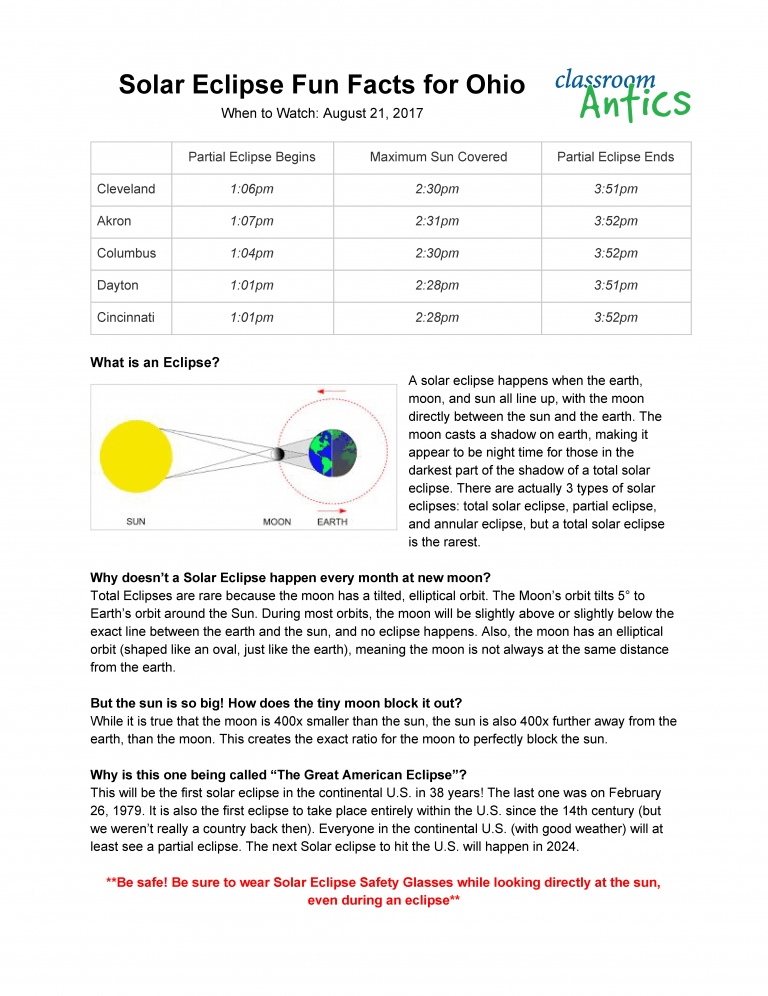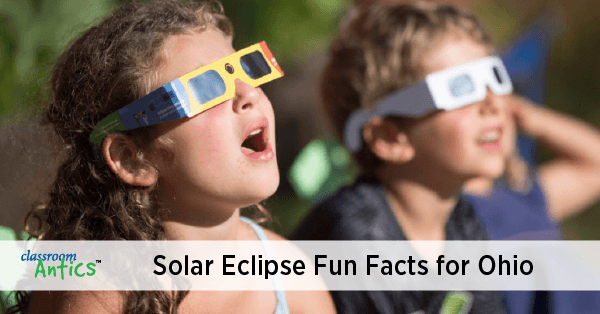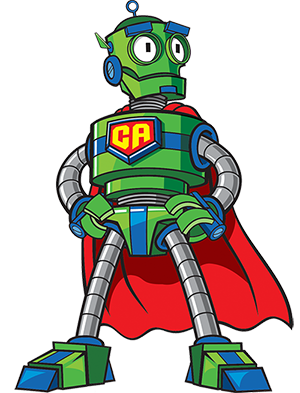With the solar eclipse on Monday, we as parents have a great opportunity to share with our kids the wonders of space. Download this Solar Eclipse Fun Facts sheet, that has information specific to Ohio residents. Learn when the optimal time is to see the solar eclipse!
What is an Eclipse?
A solar eclipse happens when the earth, moon, and sun all line up, with the moon directly between the sun and the earth. The moon casts a shadow on earth, making it appear to be night time for those in the darkest part of the shadow of a total solar eclipse. There are actually 3 types of solar eclipses: total solar eclipse, partial eclipse, and annular eclipse, but a total solar eclipse is the rarest.

Why doesn’t a Solar Eclipse happen every month at new moon?
Total Eclipses are rare because the moon has a tilted, elliptical orbit. The Moon’s orbit tilts 5° to Earth’s orbit around the Sun. During most orbits, the moon will be slightly above or slightly below the exact line between the earth and the sun, and no eclipse happens. Also, the moon has an elliptical orbit (shaped like an oval, just like the earth), meaning the moon is not always at the same distance from the earth.
But the sun is so big! How does the tiny moon block it out?
While it is true that the moon is 400x smaller than the sun, the sun is also 400x further away from the earth, than the moon. This creates the exact ratio for the moon to perfectly block the sun.
Why is this one being called “The Great American Eclipse”?
This will be the first solar eclipse in the continental U.S. in 38 years! The last one was on February 26, 1979. It is also the first eclipse to take place entirely within the U.S. since the 14th century (but we weren’t really a country back then). Everyone in the continental U.S. (with good weather) will at least see a partial eclipse. The next Solar eclipse to hit the U.S. will happen in 2024.
**Be safe! Be sure to wear Solar Eclipse Safety Glasses while looking directly at the sun, even during an eclipse**








